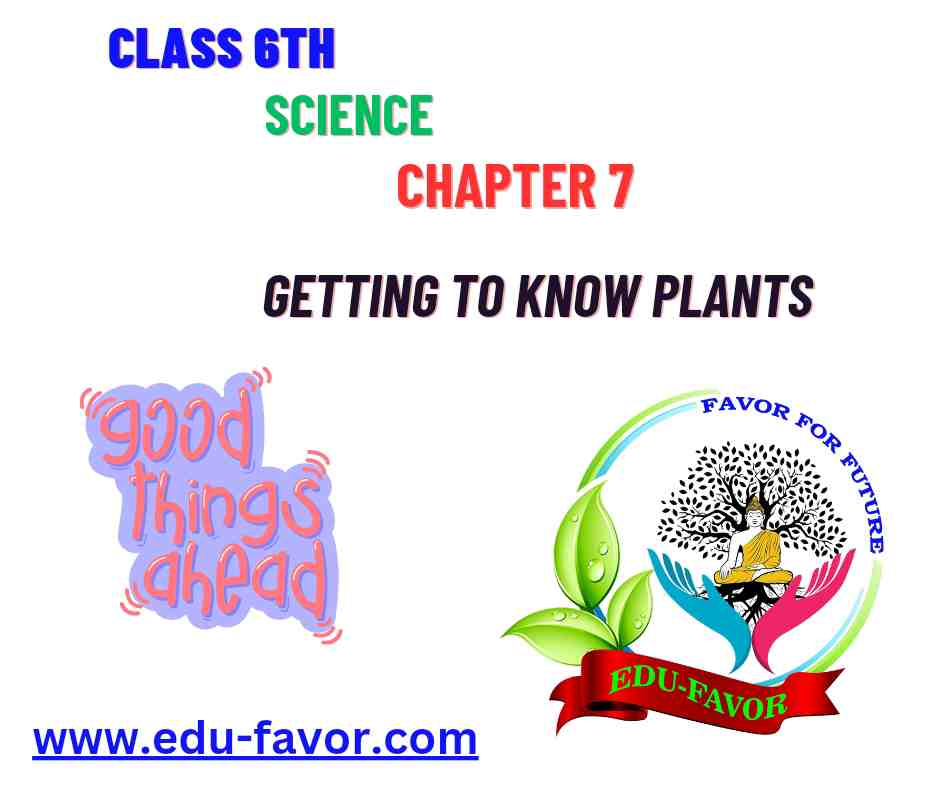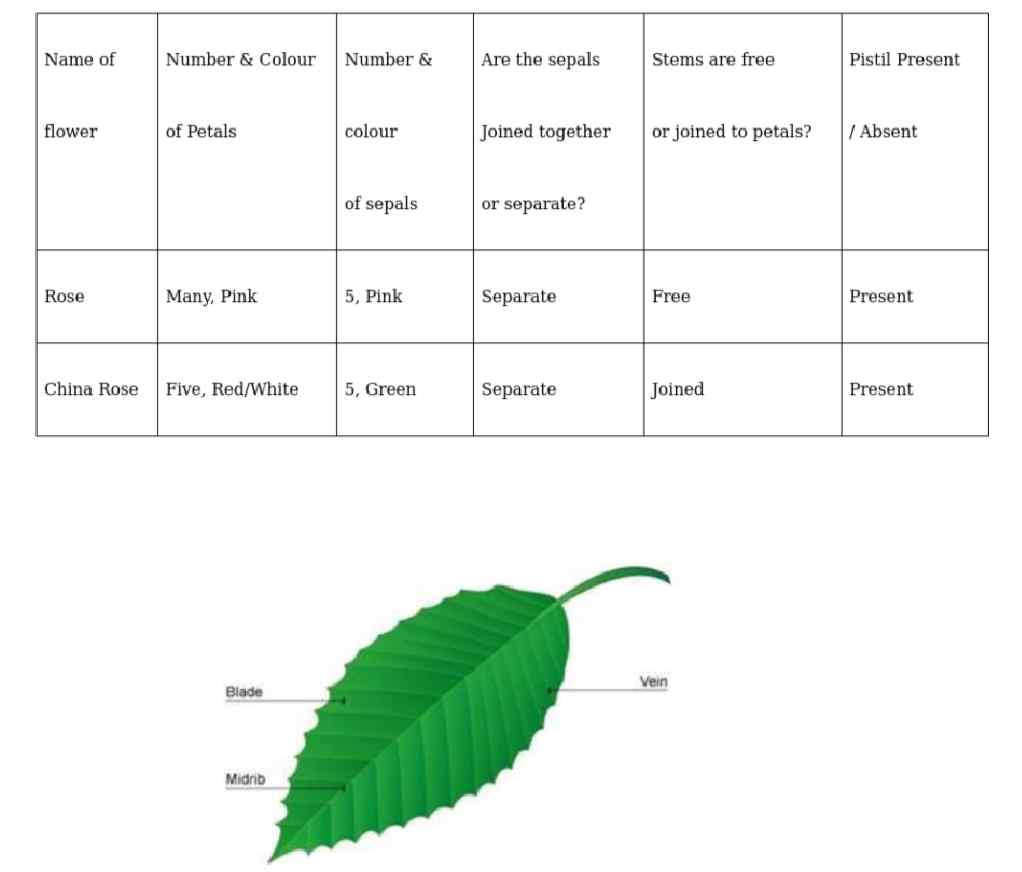In this Post you'll learn about:- getting to know plants class 6 notes questions and answers in English | Class 6 Science Chapter 7 Getting to Know plants keywords | Class 6 science chapter 7 getting to know plants notes questions | Class 6 science chapter 7 getting to know plants notes solutions | Class 6 Science Chapter 7 Notes PDF | Class 6 Science Chapter 7 Getting to Know Plants PDF | Class 6 Science Getting to Know Plants Notes PDF Download | class 6 science chapter 7 getting to know plants notes | Class 6 Science Chapter 7 Getting to Know plants keywords | Class 6 science chapter 7 getting to know plants notes questions | Class 6 science chapter 7 getting to know plants notes solutions | Class 6 Science Chapter 7 Notes PDF | Class 6 Science Chapter 7 Getting to Know Plants PDF | Class 6 Science Getting to Know Plants Notes PDF Download | Science Class 6 Chapter 7 question answer | Class 6 Science Chapter 7 Getting to Know plants Notes | Chapter 7 science class 6 notes | Chapter 7 science class 6 pdf | Science Class 6 Chapter 7 question answer | NCERT Class 6 Science Chapter 7 PDF | Class 6 Science Chapter 7 Getting to Know plants Notes | Science class 6 chapter 7 question answer pdf | Science class 6 chapter 7 question answer mcq | Science class 6 chapter 7 question answer extra | chapter 7 science class 6 question answer for CBSE and U.P Board |
NCERT Solutions for Class 6 Science Chapter 7 Getting to Know Plants Question Answer Extra, MCQ, Keywords, Notes, PDF
Class 6 Science Chapter 7 Getting to Know Plants Question 1
Correct the following statements and rewrite them in your notebook:
(a) Stem absorbs water and minerals from the soil.
(b) Leaves hold the plant upright.
(c) Roots conduct water to the leaves.
(d) The number of petals and sepals in a flower is always equal.
(e) If the sepals of a flower are joined together, its petals are also joined together.
(f) If the petals of a flower are joined together, then the pistil is joined to the petal.
Class 6 Science Chapter 7 Getting to Know Plants Answer 1
(a) Roots absorb water and minerals from the soil.
(b) Stem holds the plant upright.
(c) Stem conducts water to the leaves.
(d) The number of petals and sepals in a flower can be equal or different.
(e) If the sepals of a flower are joined together, its petals are not necessarily joined together.
(f) If the petals of a flower are joined together, then the pistil may or may not necessarily joined to the petal.
Class 6 Science Chapter 7 Getting to Know Plants Question 2
Draw a leaf, a taproot and a flower, you have studied for below table.
Class 6 Science Chapter 7 Getting to Know Plants Answer 2
(a) A leaf
Class 6 Science Chapter 7 Getting to Know Plants Question 3
Can you find a plant in your house or in your neighbourhood, which has a long but a weak stem? Write its name. In which category would you classify it?
Class 6 Science Chapter 7 Getting to Know Plants Answer 3
Yes, we can find a plant in our house as well as in our neighbourhood which has a long but a weak stem. Its name is money plant. It has a weak stem; hence it needs support. It is a climber.
NCERT Solutions for Class 6 Science Chapter 7 Getting to Know Plants Question Answer Extra, MCQ, Keywords, Notes, PDF
Class 6 Science Chapter 7 Getting to Know Plants Question 4
What is the function of a stem in a plant?
Class 6 Science Chapter 7 Getting to Know Plants Answer 4
Stem performs following functions:
i. It gives support to the plant.
ii. It transports water and minerals from roots to different parts of the plants.
iii. It transports food from leaves to other parts of the plant.
iv. It bears leaves, fruits and flowers.
Class 6 Science Chapter 7 Getting to Know Plants Question 5
Which of the following leaves have reticulate venation? Wheat, tulsi, maize, grass, coriander (dhania), China rose.
Class 6 Science Chapter 7 Getting to Know Plants Answer 5
In the given options, leaves of tulsi, coriander (dhania), China rose have reticulate venation.
Class 6 Science Chapter 7 Getting to Know Plants Question 6
If a plant has fibrous root, what type of venation do its leaves likely to have?
Class 6 Science Chapter 7 Getting to Know Plants Answer 6
If a plant has fibrous root, then the plant leaves likely to have Parallel venation. Example, wheat, grass, etc. A picture of a plant with fibrous roots is attached.
Class 6 Science Chapter 7 Getting to Know Plants Question 7
If a plant has leaves with reticulate venation, what kind of roots will have it?
Class 6 Science Chapter 7 Getting to Know Plants Answer 7
If a plant has leaves with reticulate venation, then the plant likely to have tap root.
In a tap root, there is the main root, from which other roots sprout laterally. Example, carrot. The picture of tap root is given below:
NCERT Solutions for Class 6 Science Chapter 7 Getting to Know Plants Question Answer Extra, MCQ, Keywords, Notes, PDF
Class 6 Science Chapter 7 Getting to Know Plants Question 8
Is it possible for you to recognize the leaves without seeing them? How?
Class 6 Science Chapter 7 Getting to Know Plants Answer 8
Yes, we can recognize the leaves without seeing them. It is possible by taking an impression of the leaf. To get an impression, we put a leaf under a white paper. Hold the
pencil tip sideways and rub it on the portion of paper having leaf below. You get To get an impression, we put a leaf under a white paper. Hold the pencil tip sideways and rub it on the portion of paper having leaf below. You get the impression of the leaf with some lines on it. These lines on the leaf are called veins.
1) The design made by veins of a leaf is called leaf venation.
2) If we get the net-like design on both sides of midrib, then the leaf has reticulate venation.
3) If we get lines parallel to each other, then the leaf has parallel venation.
Class 6 Science Chapter 7 Getting to Know Plants Question 9
Write the names of the parts of a flower.
Class 6 Science Chapter 7 Getting to Know Plants Answer 9
The names of the parts of a flower are- Petals, sepals, stamen (male reproductive organ) and Pistil (Female reproductive organ).
Class 6 Science Chapter 7 Getting to Know Plants Question 10
Which of the following plants have you seen? Of these that you have seen, which ones have flowers?
Grass, maize, wheat, chilli, tomato, tulsi, papal, shisham, banyan, mango, jamun, guava, pomegranate, papaya, banana, lemon, sugarcane, potato, groundnut.
Class 6 Science Chapter 7 Getting to Know Plants Answer 10
We have seen all these plants. Plants with flowers are:
Chilli, Jamun, Tomato, Guava, Tulsi Pomegranate Mango Papaya Lemon Banana
NCERT Solutions for Class 6 Science Chapter 7 Getting to Know Plants Question Answer Extra, MCQ, Keywords, Notes, PDF
Class 6 Science Chapter 7 Getting to Know Plants Question 11
Name the part of the plant which produces its food. Name this process.
Class 6 Science Chapter 7 Getting to Know Plants Answer 11
Leaves produce the food for the plant. The process by which plant prepares its food is called photosynthesis.
Class 6 Science Chapter 7 Getting to Know Plants Question 12
In which part of a flower, you are likely to find the ovary?
Class 6 Science Chapter 7 Getting to Know Plants Answer 12
We find ovary in pistil. It is the lowermost and swollen part of the pistil.
Class 6 Science Chapter 7 Getting to Know Plants Question 13
Name two flowers, each with joined and separated sepals.
Class 6 Science Chapter 7 Getting to Know Plants Answer 13
(i) Flowers with joined sepals: Hibiscus, Datura.
(ii) Flowers with separate sepals: China rose, mustard flower.
I hope you'll learn about:- Class 6 Science Chapter 7 Getting to Know Plants Question Answers | कक्षा 6 विज्ञान अध्याय 7 (पौधों को जानिए) प्रश्न उत्तर अंग्रेज़ी में | Latest NCERT Solutions for Class 6 Science Chapter 7 Getting to Know Plants Question Answer Extra, MCQ, Keywords, Notes, PDF Download In English and Hindi | Science Class 6 Chapter 7 question answer for English Medium | chapter 7 science class 6 question answer for CBSE |







Please do not enter any spam link in the comment box.